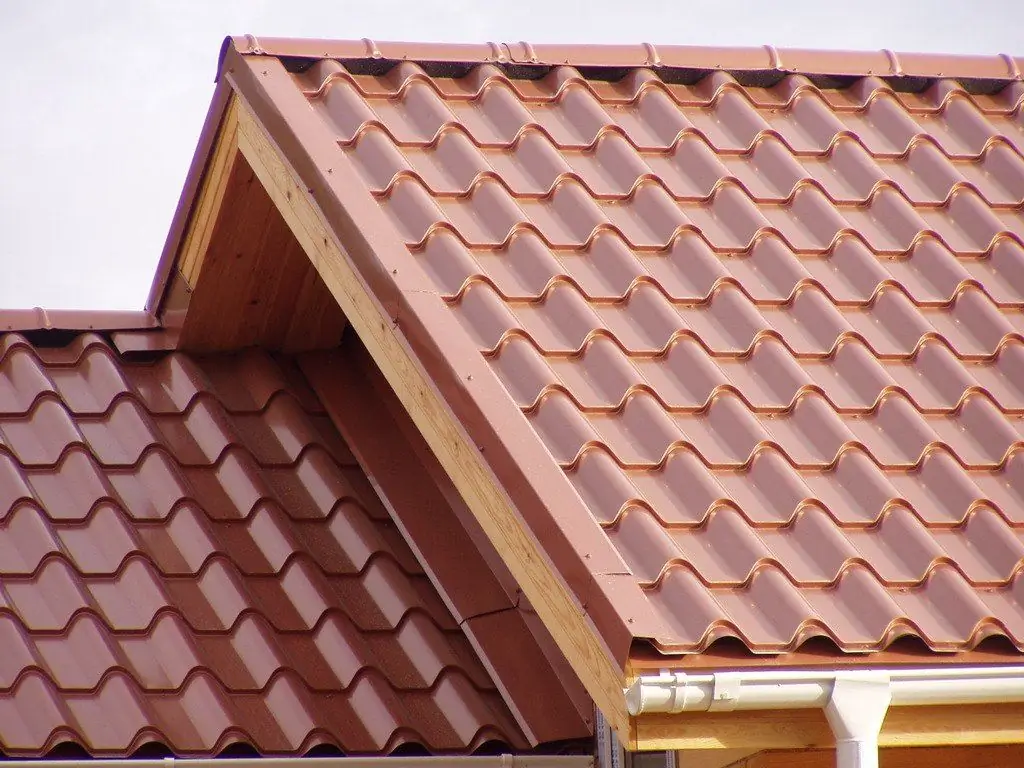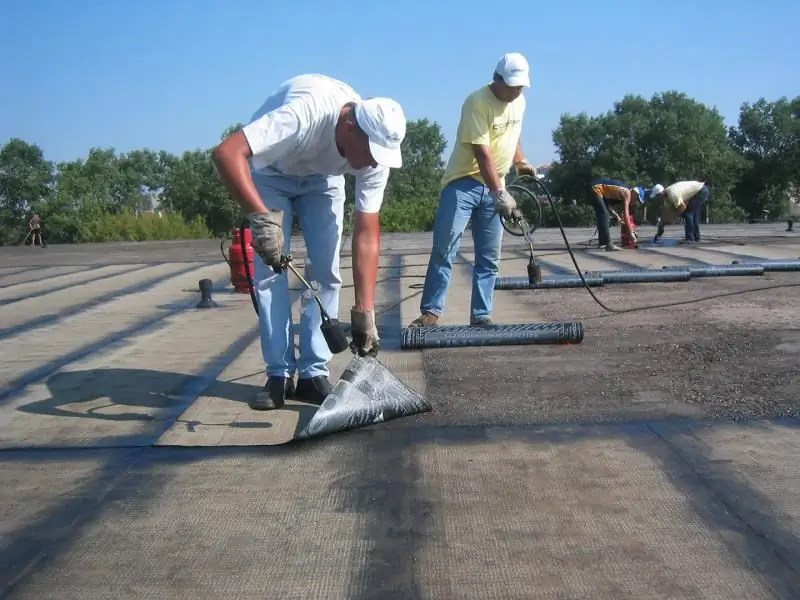
Table of contents:
- Author Bailey Albertson [email protected].
- Public 2023-12-17 12:53.
- Last modified 2025-01-23 12:41.
Do-it-yourself door restoration: it will be as good as new

Situations often arise when the doors in an apartment or house are highly durable and reliable, but over time their appearance has become ugly and unpresentable. Do not rush and change the doors right away. To bring them back to normal, you can restore the canvas. To do this, it is not necessary to contact specialists - if you deal with existing technologies, you can do all the work yourself.
Content
- 1 Preparatory work for the restoration of doors
-
2 The main methods of door restoration
-
2.1 Sanding and painting
2.1.1 Video: painting the door
-
2.2 Stencil drawing
2.2.1 Video: stencil for the door
- 2.3 Application of textiles
-
2.4 Wallpapering
2.4.1 Video: pasting a door with liquid wallpaper
-
2.5 Decoupage
2.5.1 Video: decoupage door
- 2.6 Lamination
- 2.7 Decorating
- 2.8 Overhead facades
-
2.9 Updating the canvas
2.9.1 Video: Create Film Stained Glass
-
Preparatory work for door restoration
Over time, the doors lose their original appearance. Layers of paint gradually accumulate on them, which appear after each repair, and the time comes when there is a desire to remove and discard the doors. But don't rush. If the canvas is strong and reliable, then its appearance can be updated. There are many ways to carry out restoration work. When choosing a restoration option, one must take into account the design of the room, since the doors must harmoniously fit into the interior of the room.
There are several reasons why it may be necessary to restore doors:
- mechanical damage to the surface. Over time, cracks, scratches and chips gradually appear on the canvas and door frame, which spoil their appearance;
- temperature drops and high humidity. These factors also negatively affect the condition of the door.
Before proceeding with the restoration, preparatory work must be completed:
-
Removing the door leaf. It must be removed and placed on a horizontal surface. If the hinges are collapsible, then it is enough to lift the door and remove it from the hinges. If it is installed on one-piece hinges, you will have to unscrew them.

Removing the door leaf To remove the door leaf, use special devices or improvised means
-
Removing fittings. It will be inconvenient to restore the canvas with installed handles, locks and hinges, so they must be dismantled. If there was upholstery or glass inserts on the door, these must also be removed.

Removing fittings All fittings are removed from the door
-
Removing old paint. This is the most difficult stage of the preparatory work. It is necessary to remove the old coating as efficiently as possible, otherwise it will not be possible to get a new, beautiful and even surface. There are several ways to remove paint from the door leaf:
-
manually using sandpaper is a time consuming and time consuming method;

Removing old paint by hand It is difficult and time-consuming to remove paint manually
-
using a grinder or an electric drill and a nozzle with sandpaper;

Removing old paint with an electric drill with attachment The paint is removed with a grinder or an electric drill, on which a special nozzle is installed
- grinder - this option is suitable when the door surface is flat;
-
using a construction hair dryer and a spatula. The surface of the canvas is gradually warmed up with a hairdryer, the paint begins to swell, after which it is removed with a spatula;

Removing old paint with a hair dryer The surface is heated with a hairdryer, after which the paint is removed with a spatula
-
using a gas torch or blowtorch. You have to be very careful not to damage the wooden canvas. During the work, there will be a burning smell, so it is better to carry it out in the open air;

Removing old paint with a gas burner Use a gas burner to remove paint outdoors.
-
special solutions. Such compositions are applied to the painted surface for some time, after which the paint swells and is removed with a metal spatula. You can make such a solution yourself, for which you mix oat flour, caustic soda and water. The resulting composition is applied for 40 minutes, after which it is removed along with the paint.

Liquid for removing old paint Remove paint with special solutions
-
The main methods of door restoration
The result of the restoration largely depends on how well the surface preparation is performed. Old paint should be removed slowly and carefully to completely remove it. When all the preparatory work is completed, you can start processing the door leaf.
To complete the work, you will need the following tools and materials:
- antiseptic primer;
- electric drill;
- Bulgarian;
- sandpaper of different grain sizes;
- screwdrivers or screwdriver;
- construction hair dryer;
- putty knife;
- putty for wood;
- brush or roller;
-
paint, varnish, stain.

Door restoration tools Depending on the chosen method of solution, the set of tools may vary
Grinding and painting
This is the easiest and most affordable restoration method. After high-quality surface preparation, the door leaf is painted in the selected color.
The sequence of restoration work:
-
Surface grinding. After the paint has been completely removed, the surface is sanded with sandpaper. This can be done using a grinder, an electric drill with a special attachment or a grinder. To properly polish the surface, you need to use sandpaper of different grain sizes. First, coarse-grained sheets No. 100 and 200 are used, and then - fine-grained sheets No. 400 and more.

Surface grinding For sanding the surface, sandpaper of different grain sizes is used
-
Elimination of defects. After sanding, deep cracks or scratches may remain on the blade, which must be repaired. To do this, use wood putty. After it dries, the canvas is again treated with sandpaper. The putty can be made independently; for this, fine wood dust and PVA glue are mixed. Doors should be polished especially carefully when you plan to varnish them. In this case, even the slightest irregularities and defects will be visible, and this will spoil the appearance of the restored door.

Door putty All cracks and scratches are sealed with putty.
-
Coloring. Before starting to paint the canvas, remove all dust from it with a damp cloth. After that, the surface is allowed to dry. To paint the doors with high quality, it is necessary to apply at least two layers of paintwork. First, it is recommended to paint the canvas white. After it dries, the surface is treated with fine emery and dust is removed again. It remains to cover the doors with matte paint of the required tone. A different number of layers are applied depending on how much saturation you want to achieve.

Door painting You can apply paint with a brush, roller or spray gun
Video: painting the door
Stencil drawing
You can decorate the door leaf, but if you do not have such talent, ready-made stencils are available for sale. The work is done in the following order:
- Buying a stencil. It can be purchased at any hardware store or made by hand.
- Preparation of the canvas. All work is carried out in the same way as in preparation for painting.
-
Application of a pattern. Apply the selected stencil. It should fit snugly to the surface, after which paint is applied. This can be done with a brush, roller, or from an aerosol can.

Stencil drawing After the stencil is attached, it is painted over
Video: stencil for the door
Application of textiles
Instead of dyeing the canvas, it can be covered with fabric. For this, different fabrics are used, but one must remember that all surface imperfections will shine through through thin materials.
The door is decorated with textiles in the following order:
- Surface preparation. If a thick fabric is used, then it is not necessary to prepare a flat surface of the canvas, it is enough to remove the ink build-up.
- Preparation and selection of fabric. The edges must be processed (hemmed or overlaid), otherwise the threads will protrude and this will ruin the appearance of the door. Denim (denim), velvet, leather, fur and other dense materials are suitable for such work.
-
Close-fitting. You can fix the fabric on the door leaf with glue or decorative nails.

Cloth door trim The fabric on the door is fixed with glue or self-tapping screws
Wallpapering
Pasting a door with wallpaper was very popular in the past, but fashion is constantly moving in a circle and now this method is also often used for restoration.
The wallpaper is glued in the following order:
- Surface preparation.
- The choice of wallpaper. For these purposes, preference is given to dense vinyl, velor wallpaper and silk-screen printing. Wall murals look great, although you can also use solid colors or with different colors.
-
Sticking. The work is carried out in the same way as when pasting walls. You can use liquid wallpaper, they are applied in the same way as plaster. Please note that even expensive wallpaper on the door will start getting dirty and damaged after a while, so soon the canvas will have to be restored again.

Pasting the door with wallpaper The door leaf can be pasted over with plain or liquid wallpaper
Video: pasting a door with liquid wallpaper
Decoupage
Decoupage is a common technique that even a beginner can master. Such restoration is carried out as follows:
- Surface priming.
- Painting the canvas. First, it is rubbed with paraffin and then painted.
-
Decoupage doors. You can use ready-made decoupage cards, pictures printed on a printer, multilayer napkins:
- think over the location of all the details. You can put inconspicuous marks on the canvas, so as not to forget where to glue what;
-
drawings are cut along the contour. When using multi-layer napkins, carefully separate the top layer;

Splitting the napkin It is necessary to carefully separate the top layer of the napkin
- the finished picture is applied to the dry surface of the door and covered with PVA glue diluted with water;
- smooth the material. In order to remove air bubbles, it is recommended to move from the center to the edge. To glue a large canvas, work from top to bottom;
-
doors are varnished. To make the decoupage look more beautiful, and the service life of the coating was as long as possible, after the glue dries, 1-2 layers of varnish are applied to the door.

Decoupage of interior doors For decoupage the door, you can use ready-made cards, napkins, photographs or newspapers.
Video: decoupage doors
Lamination
It is difficult to make high-quality door lamination at home, but in this way you can quickly update the appearance of the door leaf. For this, a special film with a self-adhesive base is used.
The work is done in the following order:
- Surface preparation. Removes paint buildup, repair chips and cracks.
-
Film gluing. It must be remembered that the film is glued tightly, therefore it is necessary to work with it carefully and carefully. It is impossible to free the entire film from the protective paper at once. This is done gradually, expelling the air from the point of contact with a plastic spatula.

Sticking the door with foil The film is gradually glued to the canvas and air is removed from under it with a spatula
You can not completely cover the canvas with a film, but use a variety of vinyl stickers. There is a large selection in hardware stores, so you can arrange the canvas in accordance with the interior of a particular room.

You may not completely cover the door, but use vinyl stickers
Decorating
In order to make the door leaf original, you can decorate it. One of the simplest ways is to paint the door in one color, and its protruding parts in another. On a smooth surface, you can fix polyurethane or wooden battens.

Wooden or polyurethane slats are fixed on the door, which are painted in a contrasting color
You can decorate the canvas with a pattern made of bulk materials, the most accessible of which are rice, buckwheat and colored sand. For gluing grains, wallpaper glue or PVA is used. After the canvas has dried, it is covered with several layers of varnish to fix the pattern. In addition to bulk materials, doors can be decorated with shells, broken pieces of dishes or other unusual items.

To decorate the door with a buckwheat pattern, the canvas is coated with wallpaper glue or PVA and cereals are placed on top
Overhead facades
A simple and affordable way to restore a door leaf is to install overhead facades:
- Prepare the surface of the door. At this stage, it is enough to remove the paint build-up and make the canvas even.
-
Installation of overlays. A patch panel of the appropriate size is purchased in the store. Depending on the weight of the pad used, the method of its attachment will also differ. For lightweight elements, fixing with PVA glue is quite enough. Larger linings are fixed to the door leaf with self-tapping screws or nails.

Cover panel for the front door Large door strips are attached with glue or self-tapping screws
Updating the canvas
If there is a glass insert in the door leaf, then you can update it in the following ways:
- Glass replacement. The stores have a large selection of colored, transparent, tinted, embossed glass. To replace the glass, it is enough to remove the glazing beads. After that, a new glass is inserted into the place of the old glass and again fixed with glazing beads. If the glass is fixed in a closed way, then to remove it, you will have to disassemble the door leaf.
-
Pasting of old glass. With self-adhesive foil, you can completely change the appearance of the door. For these purposes, colored or stained glass films are usually used.

Stained glass The easiest way to make stained glass is with stained glass film.
- Glass painting. For this, stained glass paints are used. You need to have talent to first make a drawing and then decorate it. If it is not enough, you can use ready-made stencils.
Video: creating a film stained glass window
If you look at the issue, it becomes clear that door restoration is not such a difficult process. You can change the appearance of the door in different ways, depending on the financial capabilities, the preferences of the owners, as well as the interior of the room, since the doors must be in harmony with the environment. Having chosen the method of restoration and having studied the sequence of the restoration work, the state of the door can be restored independently.
Recommended:
Replacing Interior Doors With Your Own Hands: The Main Stages Of Work With Step-by-step Instructions

Do-it-yourself installation of interior doors. The main stages: dismantling the old door, preparing the doorway, installing a new door, finishing the opening
Repair Of Metal Roofing, Including A Description Of Its Main Stages, As Well As Material And Tools For Work

Methods and materials for the repair of metal roofing. What tool is needed and step-by-step instructions for eliminating roof breakages
Repair Of A Soft Roof, Including A Description Of Its Main Stages, As Well As Material And Tools For Work

Diagnostics of the condition of the soft roof. Repair types and their main features. A brief overview of roofing materials and recommendations for their selection
Flat Roof Repair, Including A Description Of Its Main Stages, As Well As Material And Tools For Work

A brief description of the types of flat roof repair. Recommendations for the selection of roofing materials. Technology for eliminating various defects on flat roofs
Rolled Roof Repair, Including A Description Of Its Main Stages, As Well As Material And Tools For Work

The main types of repair work. Preparation for work and general safety precautions. Step-by-step instructions for performing major and current repairs
